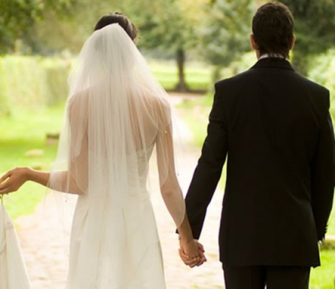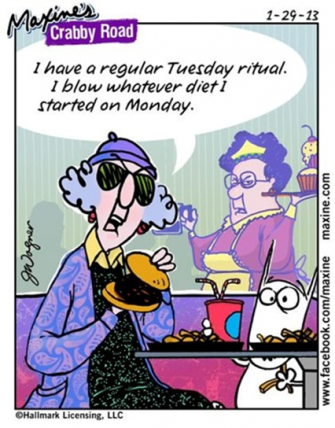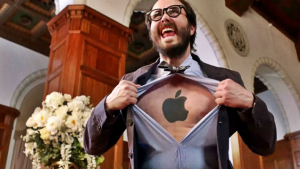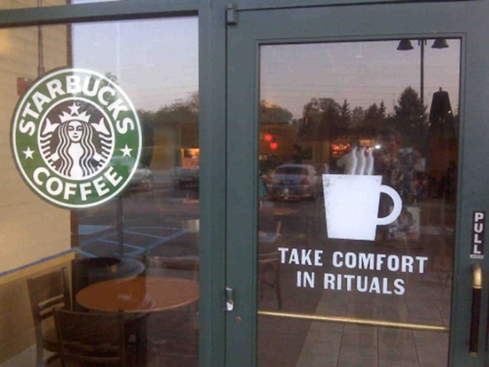NICOLA WATTS on 28 June, 2017 at 04:06
Around the world, June is a month imbued with symbolism, tradition and special occasions, from Royal Ascot, Wimbledon and Glastonbury in the UK to Arizona’s Prescott Frontier Days Rodeo , Aspen’s Food and Wine Classic and Tennessee’s Bonnaroo in the US, Rath Yatra in India, and Hajj 2017 in Saudi Arabia.
It’s a month that marks a rite of passage for many, from graduations that signify the end of childhood and the dawn of adulthood to one of the most popular months for weddings that symbolise new unions and beginnings. For many, the beginning of summer and the thought of holidays is guaranteed to put us in good spirits.
What do these all have in common? They all involve rituals. A ritual carries meaning and triggers an immediate emotional response. It’s a ceremony or activity performed in an established, habitual way. But rituals are way bigger than habits. They’re not just about special occasions; they also cover more routine events, such as the way you always eat your favourite biscuit, your family’s Saturday night tradition of take-out pizza whilst watching X Factor together, or attending Midnight Mass on Christmas Eve. Rituals are arguably any activity that we perform for both its symbolic and emotional value as well as its practical value.
Rituals stand for something meaningful. They connect us to a group and create a sense of belonging. It defines who we are. You’d be hard pressed to name any society or culture where rituals do not feature heavily. We all have personal rituals that mean something to us but seem illogical to others. Rituals that help us bond with friends, family or our communities, rituals to moderate our grief and loss and rituals that shape, strengthen and help us assimilate life stage transitions such as weddings or a new baby.
We’re hardwired to love rituals. We’re culturally programmed to enjoy doing things that have both symbolic and emotional value. They help us make sense of our experiences and provide a sense of connectivity and belonging. For special occasions and times of significant change in our lives, they ground us and stop us feeling overwhelmed. They imbue us with a feeling of safety and security. They provide us with both nostalgia and familiarity in a world that is constantly changing. We favour the path of least resistance so we prefer well-established behaviour and will also copy or mirror such behaviour if we see it in others. Plus, in lots of cases they can be way more fun!
Rituals provide four functions in our lives. They structure our lives on a daily, weekly and seasonal basis. They help us bond, build trust and provide clarity on the role we and others play in our families and chosen communities. They legitimise and shape intense emotions such as grief and happiness. They help us internalise, comprehend and reduce anxiety at times of important life stage transitions. Importantly, they make us feel that we are in control and reduce uncertainty.
We engage in rituals for a lot of different reasons, from reducing our anxiety before a job interview to boosting our confidence before a big presentation, alleviating our grief at a loved one’s passing to performing a Haka before an important match. Psychologists have demonstrated that these rituals actually work whether or not you believe they will. Such is their power! Experiments have proven that superstitious rituals such as keeping your fingers crossed or holding a lucky charm enhance your self-confidence, motivate you to greater effort and consequently improve performance. Mourning rituals can help to alleviate and reduce grief in both life changing losses and mundane ones.
Where do brands fit into all of this? We as consumers invite them to join our rituals, to make them part of our everyday routines. Brand rituals can be a powerful brand property in creating mental shortcuts and lasting brand loyalty. They give emotional meaning to otherwise tedious behaviour.
Research has proven that rituals can increase our perception of value. Employees who perform rituals as part of their jobs find their work more rewarding. Consumers, who use a ritual to experience your product, enjoy it more and are willing to pay more for it.
Neuroscientists used an MRI scan to examine the brain of an Apple fanatic and found that the brand stimulated the same parts of the brain as religious imagery does in people of faith. Perhaps pious devotion manifests itself in the same way no matter the object of desire!
Researchers from the University of Minnesota and Harvard Business School conducted a series of tests into how rituals prior to eating food as diverse as carrots or chocolate changed the experience. For both food types, it increased the anticipatory pleasure and the eating experience itself, by making the product more flavourful. They surmised that rituals helped people feel more engaged and mindful of their consumption experience, which intensified its perceived value.
A number of highly successful brands have created their own consumption rituals. Can you recognise which brands these are by their rituals alone? Answers below!
- ”Twist,” “Lick,” “Dunk”
- Putting a piece of lime into the bottle’s neck prior to drinking
- Pop off the cap of the long tube pack
- 6-step pouring experience: the glass, the angle, the pour, the head, the top-off and the first sip
- Breaking the sticks into halves before eating
All these rituals enhance the brand experience, giving them additional value and importance whilst conveying a sense of being part of an exclusive club or family.
Have you considered how you could add a ritual to your brand’s experience or even your teams? Maybe you should; it is perhaps one of the most effective tools you have to engage people’s emotions and loyalties Here’s how you can create that ritual in a meaningful way:
- Ritualise a behaviour that already exists, even if not everybody does it.
- Be specific and give contextual triggers – when, where and how?
- Give your ritual a clear beginning and end.
- Be consistent, repetitive and replicable.
- Embed the ritual with meaning, otherwise it’s just a habit.
- Sync the ritual to your brand values and purpose in a meaningful way.
- Use memorable iconography to anchor it in consumers’ minds.
- Keep it simple to ease adoption.
- Own it, ensuring others can’t copy.
Answers: Oreo’s, Corona, Pringles, Guinness and KitKat









